You may not find this terribly rewarding unless you're included here, so this is a good time for casual and random browsers to turn back before they get too caught up in the sweep and majesty of the proceedings and can't let go.
We were visiting the Veneto region north of Venice earlier this spring, and now we're back to see some more of what we missed farther south.

We're back for another go at the Castello del Catajo, 18 May 2017. It's at the north end of the town of Battaglia Terme on the SS16, alongside the 12th century, 36km-long Canale Bisato, which here becomes the Canale Battaglia.

The Castello is less a 'castle' than a 'family home' of sorts, famous for its grandeur, its architectural styles, its frescoes, and perhaps most of all, its size.
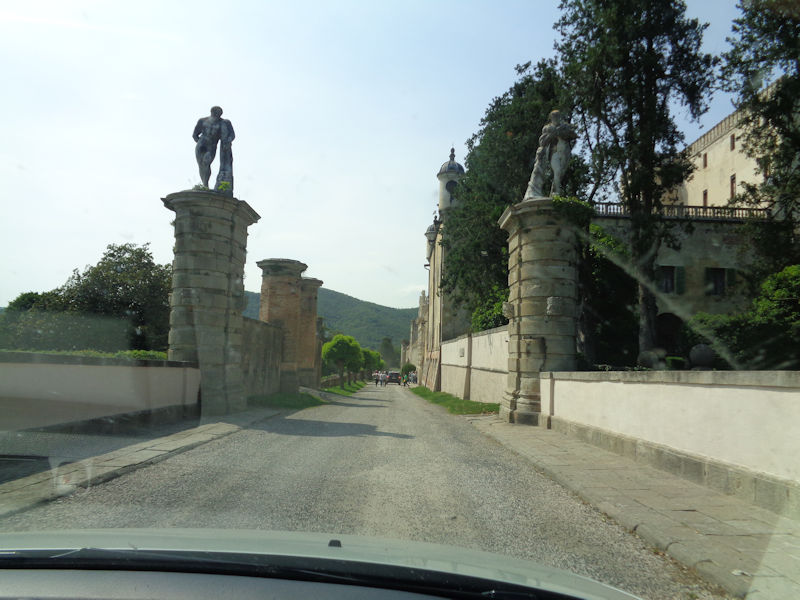
Through the front gates -- it's open today! The Castello del Catajo (aka Cataio) was built by 16th century members of the illustrious Obizzi family -- a family which is traced to two brothers who are said to have migrated to Italy from Burgundy in 1007 following the Emperor Henry II in his first attempt to suppress the claims of Arduin of Ivrea to the kingship of Italy. With Henry's withdrawal, brother Frisco went to Genoa where he founded the Fieschi family, whilst Obizzo went to Lucca as Henry's Imperial Vicar for Tuscany and began the Obizzi line.

In the early 14th century, Gherardo degli Obizzi migrated to Ferrara and began the Obizzi Ferrara line, and by the 15th century this branch was listed amongst the noble families of Venice. The family had always been military -- Tommaso degli Obizzi is said to have been the Captain General of the Papal armies under the Avignon Pope Urban V in the 1360s -- and in the mid-16th century the head of the family, Pio Enea I (aka Pius Aeneas) degli Obizzi, was a well-established condottiere or free-lance military commander with a generous contract to employ his private army in the defense of the Veneto.
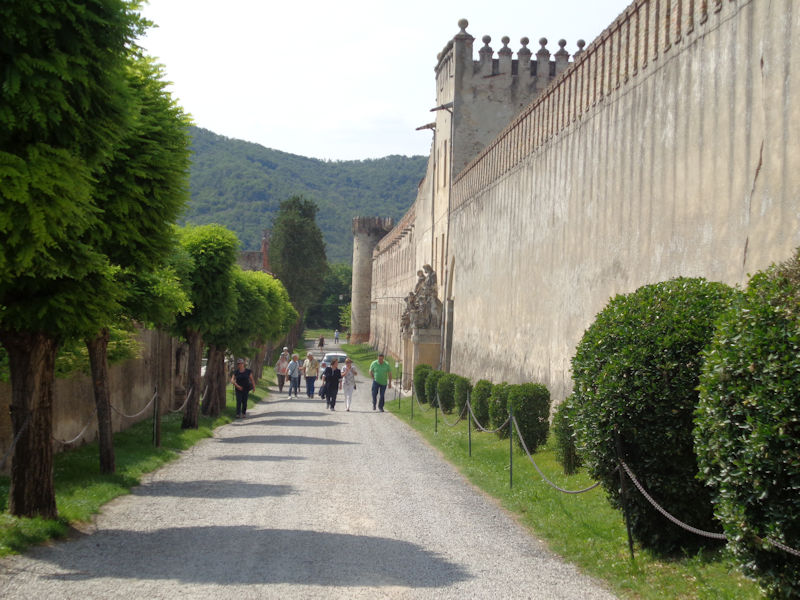
That's Kristin in the far background hurrying along after parking the cute little Volvo. Pio Enea had also inherited all of the family's properties in Tuscany, Ferrara, and Padua, and his marriage to Eleonora Martinengo in 1563 had brought in an enormous dowry. So he was ready to splash out a bit, and how better to do so than to build this grand palace for the edification of his family heritage and for fun.

This is called the 'Giants Courtyard' (a decent football pitch, but they also staged fake naval battles here). As Kristin's dashing up the driveway, I've bought the tickets and delved into the exhaustive visitor's handbook they've provided for us on loan. Like this:

I can't possibly read this fast -- so we've come home with 7 photographs for solemn reflection later.

That's the Elephant's Fountain, more on that later. Pio Enea's mother Beatrice had built a villa on this spot, but the worthy gentleman set about turning it into something special, and Big. Apparently with the help of the architect Andrea da Valle (whose Villa dei Vescovi in Luvignano we've literally just come from), Pio Enea set out in 1570 to build, around the 'Beatrice House', his Castel Vecchio or Old Castle, with a long arm extending to the northwest to hold a little oratory and barracks for his private army of 350 men at arms.

Up the stairway, suitable for horses. The building project was completed by 1573, but in the meantime an itinerant poet, Giuseppe Betussi, a protégé of Aretino's, desperate for work, sold Pio Enea on the idea of creating an epic artistic extravanza that would make the Obizzi name ring out through the ages. He set out a programme of 40 huge frescoes commemorating glorious events in the half-millennium history of the family, and published a book about it all, the Ragionamento sopra Cathaio, in 1573, in which he insisted that, whilst relying on family traditions, of course, he'd also researched the historical material thoroughly.

We're being escorted up past the Great Terrace to catch up with a guided tour that's already launched; "wait up!" For the fresco part of this artistic enterprise, Pio Enea and Betussi commissioned Battista Zelotti, a close associate of Veronese's -- a Mannerist painter who we're told would be better known today if he hadn't also been known as Battista da Verona and Battista Farinato (a confusion with his uncle) -- both names used in Vasari's Lives in discussing what he thought were two different men -- and if many of his works hadn't long been attributed to Veronese.

The Great Terrace -- Pio Enea's edifice includes attributes of fortifications which are largely atmospheric, and the palace is basically just a grand residence.
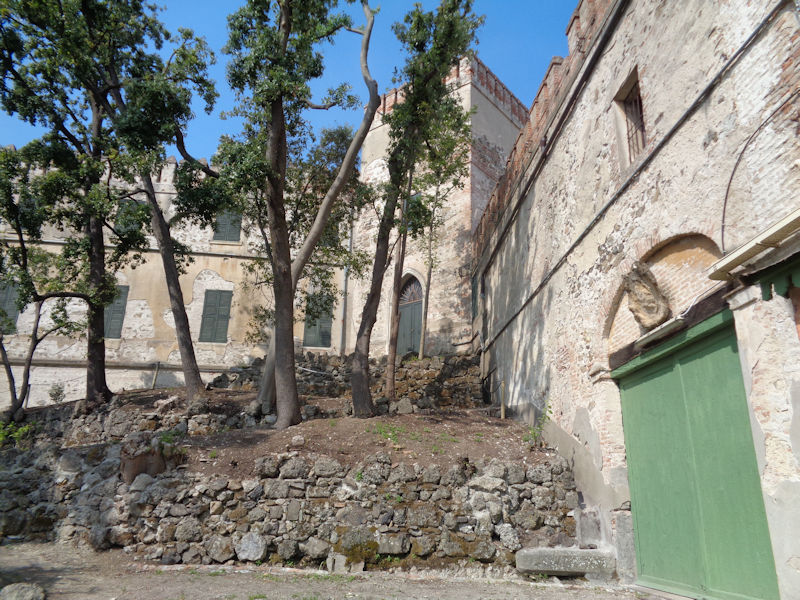
We're just been through six special rooms of the Castel Vecchio to see, rather hastily but with pithy commentary, the 40 Zelotti frescoes memorializing the reputed achievements of the Obizzis -- 'NO PHOTOS' are permitted, so there you are -- and emerged onto a long extension looking up at the "New Castle". The Castel Novo was added in the 19th century -- when the Obizzis were running out of dynasty in 1830, the then-Marquis Tommaso gave the palace to the Este family, then Archdukes of Modena. Once thrown out of Modena the Este court lived here, but when that line failed, the palace was passed on to Franz Ferdinand, the Austrian imperial heir, who liked it a lot but transported all its valuables, its archaeological artifacts, musicial instruments, weapons collection, and paintings, out to Vienna and Prague -- and then got himself assassinated in Sarajevo. Just saying.
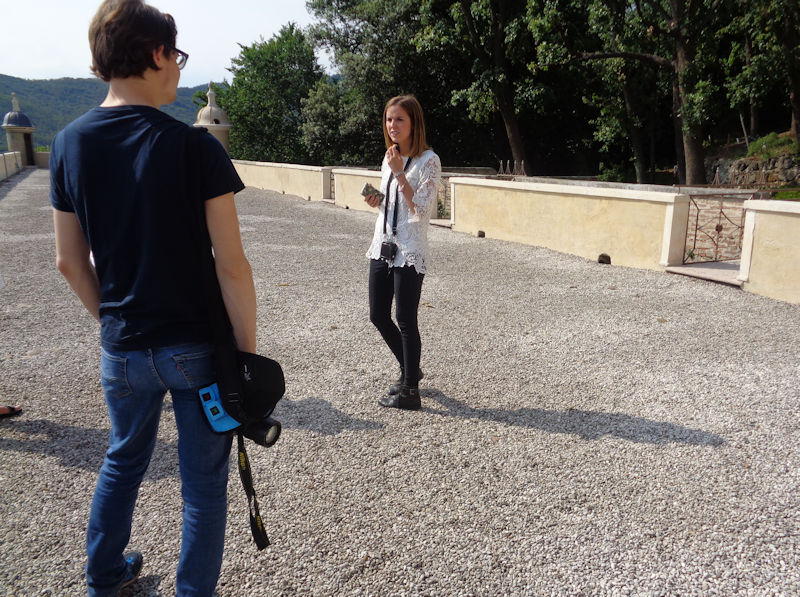
Our eloquent guide pointed out that after World War One the Italian government confiscated Catajo as war reparations, quite properly, and then auctioned it off to a private family in 1929. It has apparently changed hands again in 2015 but is still privately owned.
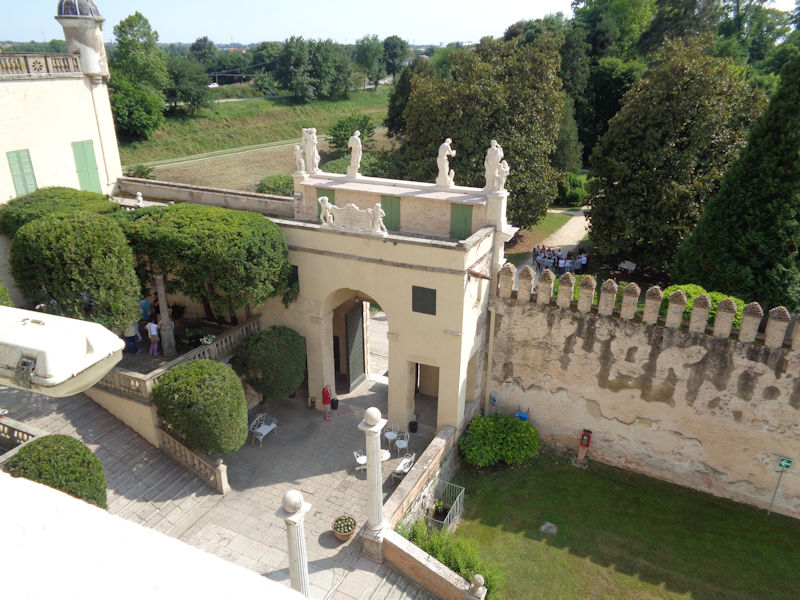
Staring down upon the front gate and the Giants Courtyard

The Castel Vecchio rising behind us

I'd lost the thread by this time (it was in Italian), but our guide is presumably explaining something about the lovely park that runs out to the southwest.

This shows much of the park, including the Viale di Magnolie and the vegetation-covered Peschiera Grande, or big fishpond.

Looking across at the 'Great Terrace'

A sneaky photo of some of Zelotti's frescoes to show how they're situated in the rooms
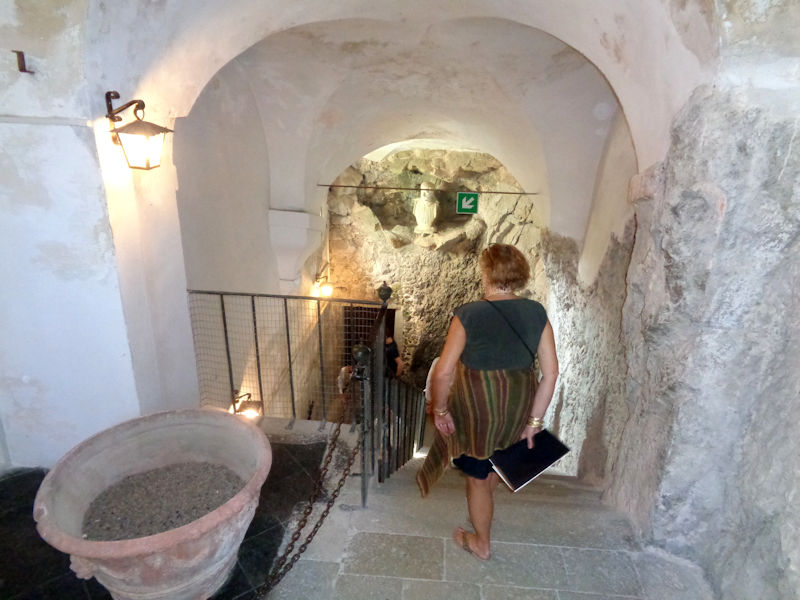
We proceed.
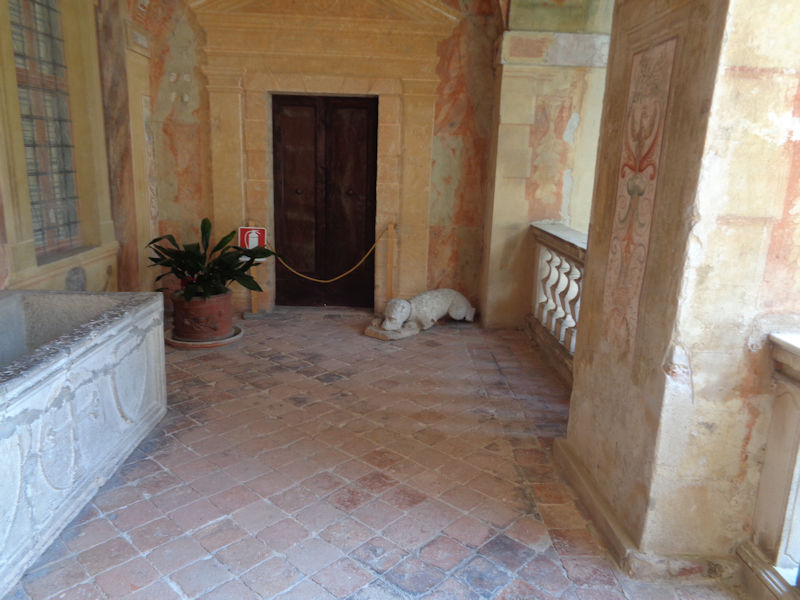
Balconies that are part of the Castel Vecchio, and a fake dog
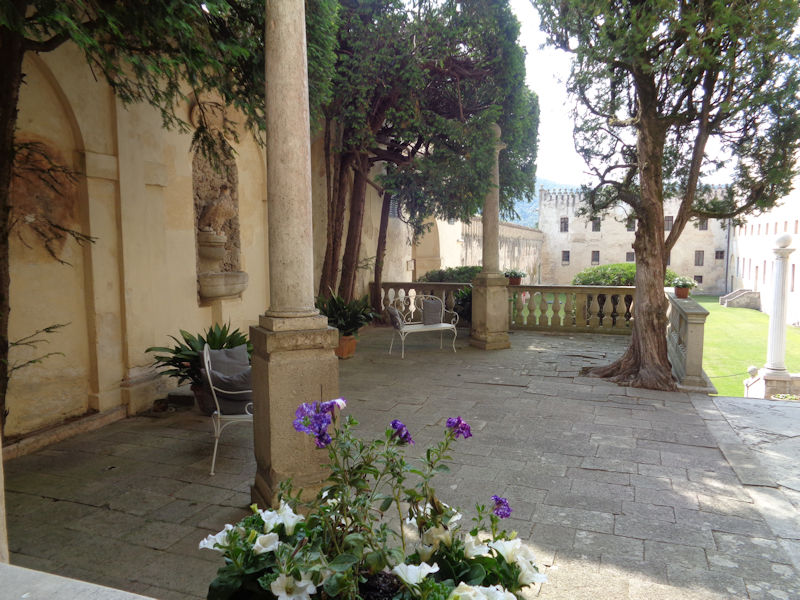
Commodious surroundings (I made a note about that tree but can't find it now)

Down the stairs to the exterior of the original Beatrice House, very beautiful
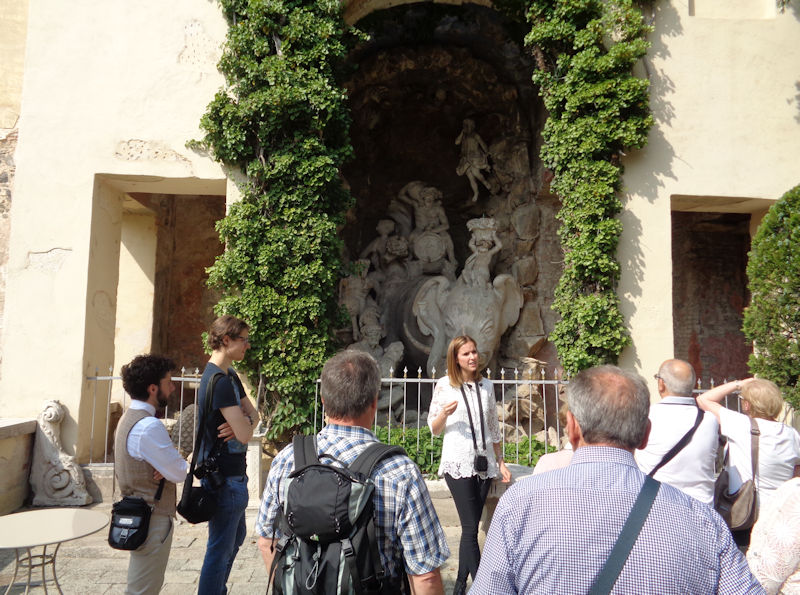
Our earnest guide explaining the Elephant Fountain
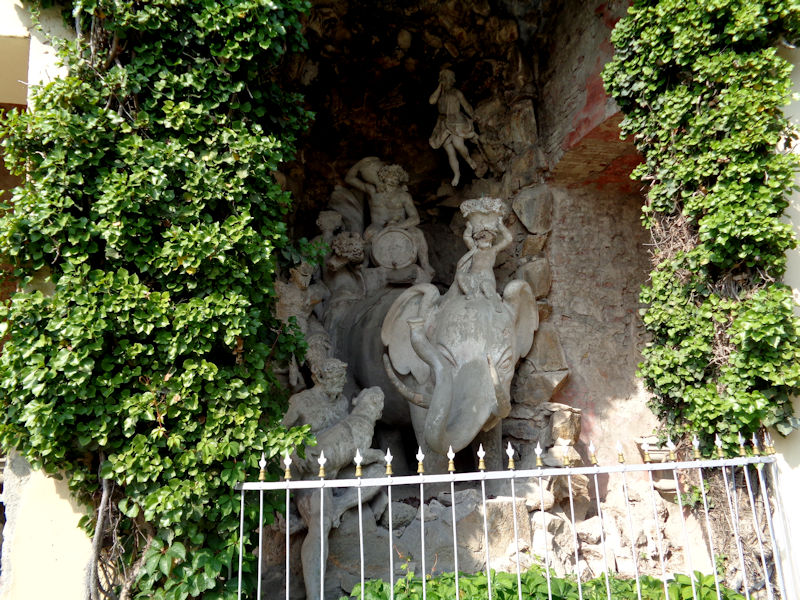
Pretty grim

Inside the park, we're looking at the length of the exterior additions, past the oratory or chapel, the larger building
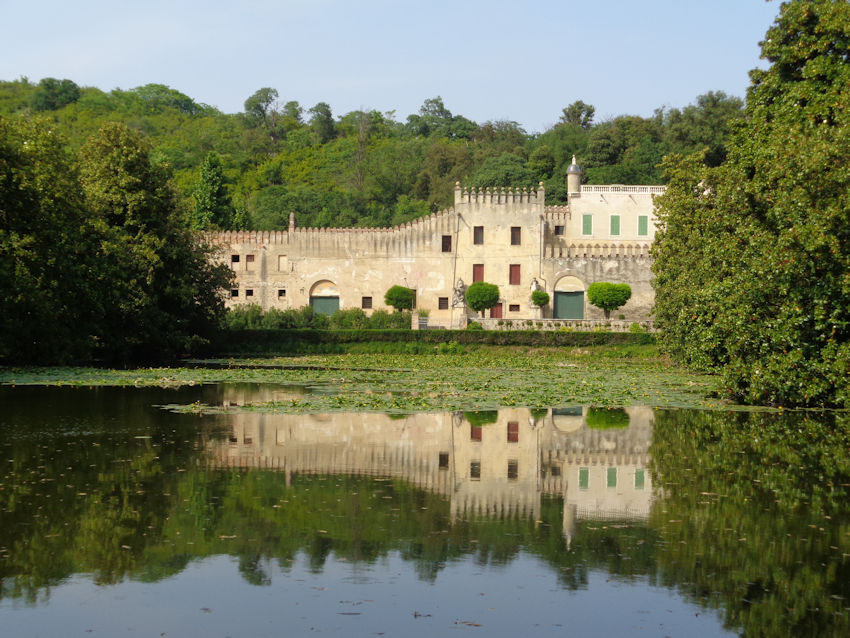
From the Grand Fishpond, looking at the Oratory and fake-fortified extensions

The Castello del Catajo, partially carved out of the hillside. The origin of the name 'Catajo' has competing, mostly fanciful, explanations (one of them involving Marco Polo), but the consensus seems to hover over Ca' Tajo, Venetian dialect for the building (Ca' for Casa) where land is being cut or excavated, in this case for the several canals that intersect all over this region.

Still in the park -- that was fun, but now we're just looking for a way out.

The Oratorio of San Michele

The carpark at the back of the old barracks

Very impressive -- a monument to rich people's self-esteem, often tastefully done, and a repository of some very interesting period frescoes, which there was insufficient time to look at properly. (That can be remedied -- see below.)
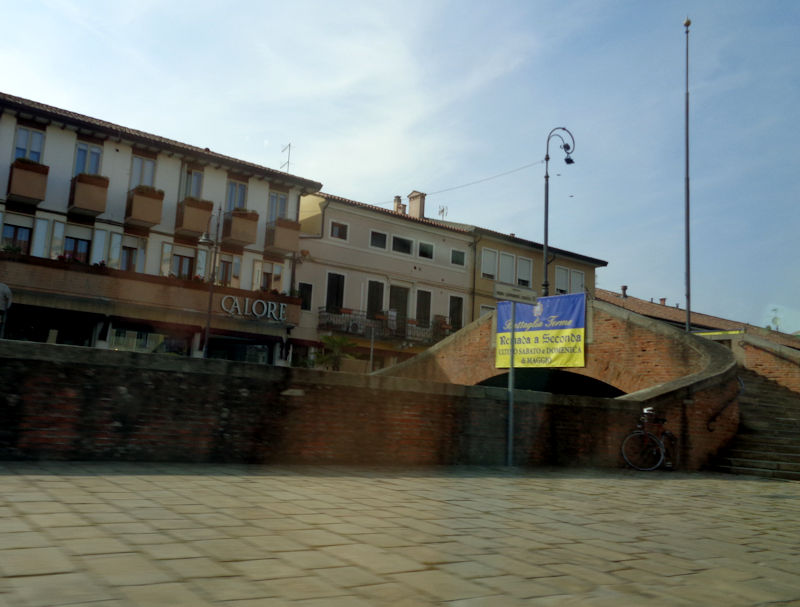
Driving through Battaglia Terme with its famous Ponte dei Scaini

Passing Monselice on the way back home to the Locanda Ca' Vejo near Megliadino San Vitale
Betussi's and Zelotti's festival of Obizzi family history frescoes
The Castle is a NO PHOTO zone, and though there is no CCTV, the nice guide presumably has an eye out for inappropriate behavior. And you certainly cannot properly view the pictures, about eight to a room, when following the groups through promptly is understandably so important to the management.

But -- nil desperandum -- all is not lost. This is Irma B. Jaffe, Zelotti's epic frescoes at Cataio: the Obizza saga (Fordham University Press, 2008), a coffee-table book with excellent reproductions and Prof. Jaffe's commentaries on each of them. (The book can be got for about US$ 12 on Amazon US.)

On the recto, Obizzo III is being created Captain of the Pope's Guard in 1252. Giuseppe Betussi insisted that he researched his material very thoroughly and melded it with family traditions -- as Prof Jaffe points out, generally speaking and with some exceptions, the events really did occur but there's no good evidence that the Obizzis were there.
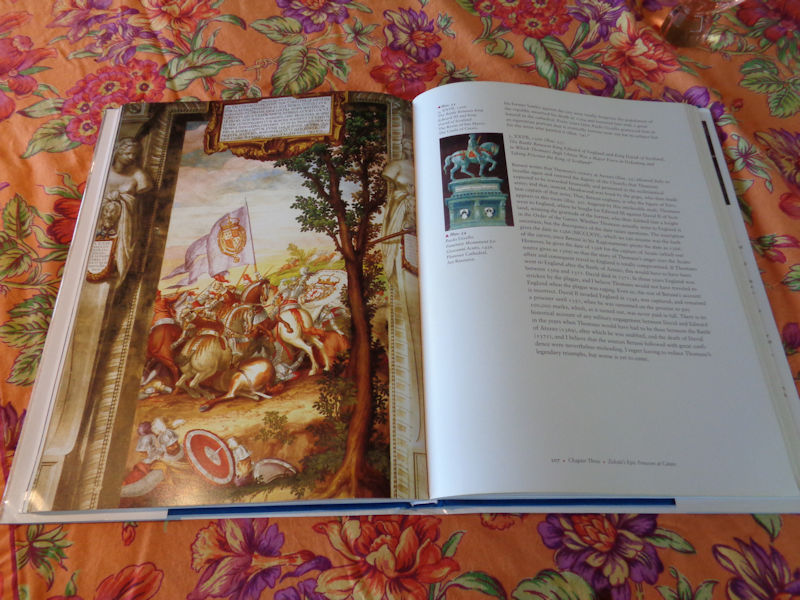
The battle between King Edward III of England and King David of Scotland, in which Tommaso degli Obizzi took the King of Scotland prisoner. Prof Jaffe reduces this scenario to a dry hilarity.
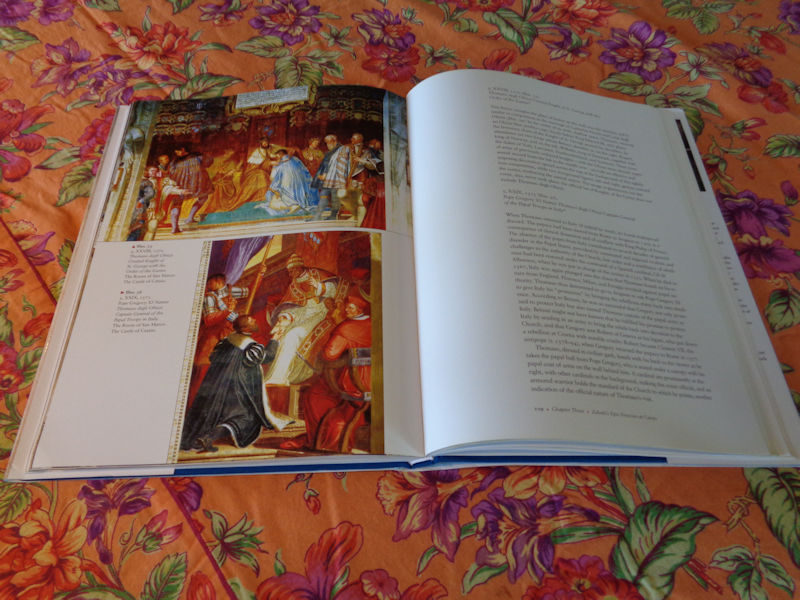
The top fresco shows Tommaso degli Obizzi being created a Knight of the English Order of the Garter by King Edward III in ca.1370 -- it's a stirring snapshot of family history, but there is alas no evidence that Tommaso went to England or that anyone with his name appears on the official list of KGs. The lower fresco shows Tommaso receiving his commission from the Avignon Pope Gregory XI to bring dissenting Italian city states back into obedience; in fact, the Pope sent Cardinal Robert, Count of Geneva, to do that, who after massacring the population of Cesena became Pope Clement VII, the first antipope residing in Avignon.

The cover shows Tommaso degli Obizzi defeating the great Sir John Hawkwood ('Giovanni Acuto') in the Battle of Arezzo, 1368. Sir John was unhorsed and captured, but was instantly ransomed by Pisa; there's no evidence of Tommaso's participation in that.














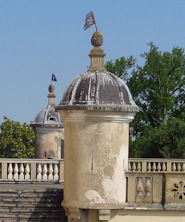 Dwight Peck's personal website
Dwight Peck's personal website


















































